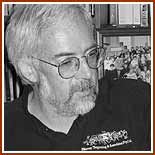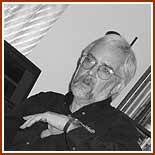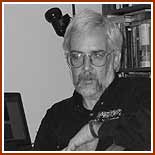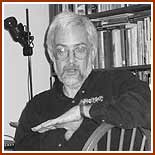 |
|
 "The 1939 fires that devastated most of the sawmills in regional Victoria was started on New Years Day by a settler at King Lake burning off scrub."  "A 30km front jumped the Acheron Valley and raged through the Rubicon Forest, 12 people died at Rubicon, and another seven on the Acheron Way."  "Two big fire fronts met almost on top of the seven small sawmills at Matlock and fifteen men died that day at Fitzpatrick’s mill."  "The fires ripped entire 100-metre mountain ash out of the ground by the roots. Others it twisted off half-way up. Foresters I spoke to still speak in wonder at the sight of it."  "The fires rewrote laws relating to forests, created new fire-protection strategies and affected Australia’s efforts in the Second World War." |
Peter Evans Historian. Has published books and reports on the sawmilling communities in Victoria.  I might never have been drawn to investigate the history of the 1939 fires had it not been for Ash Wednesday. By the time of that fire I was already fascinated by the remains of sawmills and their network of tramways I was discovering during bushwalks. Returning to the forest in the first few days after the Ash Wednesday fire was both horrifying and amazing. The stillness was deathly – not a single leaf rustling and not a bird call to be heard. The only life I saw during an entire day was single snake emerging from a hole in the ground. But it was also as if a veil covering the past had been drawn away. You could see where individual houses had stood before they were burned in 1939, with the twice-charred remains of personal possessions scattered around. There were remnants of machinery everywhere. The tramway networks started to make more sense and you could see how those who had planned and built them had used the landscape to best advantage. Within weeks the forest started to recover. As the ferns sprouted and trees started to sucker, I realized the veil was returning. Most weekends over the next few years were spent mapping tramways and mill sites. I started to talk to former sawmill residents and quickly appreciated that the trauma of the 1939 fires remained an indelible part of their memories and still had a strong emotional impact.  My accumulated experience allowed me the privilege of working with the Historic Places
section of the Natural Resources and Environment Department, carrying out further historical research and survey work to assess the heritage value of sawmill sites all over Victoria. I also prepared a report on historic sites associated with the 1939 bushfires. As part of that report, I needed to locate Fitzpatrick’s mill, where almost the entire community had been wiped out in 1939. After deciphering the clues buried in the Forest Commission records, I walked in to the mill site on a cool, clear morning. I was totally unprepared for the effect the place would have on me. There was a stillness in that clearing that made the hairs on the back of my neck stand on end. I don’t believe in ghosts, but if I ever did, that would be the place to start. Others who have been in to the site with me since have experienced the same feeling. A day spent going through the photographs produced at the inquests into the
fire deaths was equally unsettling. The effect of this research was to draw me further into the study of the 1939 bushfires, to try to understand the sequence of events and how it had affected the people who had to confront it and live with the experience afterwards. My accumulated experience allowed me the privilege of working with the Historic Places
section of the Natural Resources and Environment Department, carrying out further historical research and survey work to assess the heritage value of sawmill sites all over Victoria. I also prepared a report on historic sites associated with the 1939 bushfires. As part of that report, I needed to locate Fitzpatrick’s mill, where almost the entire community had been wiped out in 1939. After deciphering the clues buried in the Forest Commission records, I walked in to the mill site on a cool, clear morning. I was totally unprepared for the effect the place would have on me. There was a stillness in that clearing that made the hairs on the back of my neck stand on end. I don’t believe in ghosts, but if I ever did, that would be the place to start. Others who have been in to the site with me since have experienced the same feeling. A day spent going through the photographs produced at the inquests into the
fire deaths was equally unsettling. The effect of this research was to draw me further into the study of the 1939 bushfires, to try to understand the sequence of events and how it had affected the people who had to confront it and live with the experience afterwards.The 1939 bushfire that devastated most of the sawmills in the ash forests was started on New Year’s Day by a settler at Kinglake, burning off scrub. It took ’til Sunday the 8th of January to travel as far as Toolangi, burning slowly through the bush. On that day, a strong south-westerly sprang up, and the fire burned all the way from Toolangi to the head of the Black Range near Alexandra. Now, that’s travelling up in a north-easterly direction. You can imagine what this great big long range looked like, burning from end to end. One of the sawmill residents I talked to described it as “like thousands of jewels in the night time”. But there was a dark side to its beauty - two men were killed on that first day.  There was a lull for the next day, on Monday the 9th, leaving a 30km line of fire stretching along the Black Range. It got a strong north-westerly wind behind it on the Tuesday the 10th. That 30km front jumped the Acheron Valley and raged through the Rubicon Forest, and down as far as the hills above Warburton near
Donna Buang. On that Tuesday, 12 people died at Rubicon, and another
seven on the Acheron Way. There was a lull for the next day, on Monday the 9th, leaving a 30km line of fire stretching along the Black Range. It got a strong north-westerly wind behind it on the Tuesday the 10th. That 30km front jumped the Acheron Valley and raged through the Rubicon Forest, and down as far as the hills above Warburton near
Donna Buang. On that Tuesday, 12 people died at Rubicon, and another
seven on the Acheron Way.Then there was another day of lull on Wednesday the 11th. Now in today’s fire season, in a day of lull, fire-fighters can put in control lines and backburn. But they didn’t have the resources or the access then, and there wasn’t much that they could do. As a result, they had a situation on the night of the 11th, where the Acheron front stopped above Warburton, and the Rubicon front crept down to the Big River and stopped there. Then there’s another day of lull on Thursday the 12th.  On the following day, Friday the 13th of January, the wind sprang up again in gale force, and the Warburton fire went east towards Matlock, and the Big River fire (which had come out of the Rubicon), came
south-east down over Woods Point. From the evidence given to the subsequent inquests and Royal Commission, the two big fire fronts met almost on top of the four small sawmills at Matlock. The people at those mills had no way of knowing what was about to happen to them. Fifteen men died that day at Fitzpatrick’s mill in Matlock. On the following day, Friday the 13th of January, the wind sprang up again in gale force, and the Warburton fire went east towards Matlock, and the Big River fire (which had come out of the Rubicon), came
south-east down over Woods Point. From the evidence given to the subsequent inquests and Royal Commission, the two big fire fronts met almost on top of the four small sawmills at Matlock. The people at those mills had no way of knowing what was about to happen to them. Fifteen men died that day at Fitzpatrick’s mill in Matlock.The effects of the fire were awesome. It ripped entire, almost 100-metre tall mountain ash out of the ground by the roots. Others it twisted off half- way up. Foresters I’ve spoken to still speak in wonder of the sight of these trees twisted off half-way up. This happened all through the fire zone. You can’t go far in the forest today without seeing the stags from the ’39 bushfire. And the forest that’s there now, all even-aged in the ash country, well, that was born in the same fire. That fire rewrote laws relating to forests, remoulded the attitudes of those who worked in them, created new fire-protection strategies, affected Australia’s efforts in the Second World War, and still shapes what happens in the Victorian timber industry today. I don’t think it is possible to underestimate its importance in Victorian forest history. Read more about the Black Friday bushfires in the Timeline section |
The Historians
Dr. Tom Griffiths
Senior Fellow - Convenor, Graduate Program in History. Australian National University Mike McCarthy An amateur Historian – has published three books on sawmilling regional history in Victoria Peter Evans Historian – he has published books and reports on the sawmilling communities in Victoria Ted Stuckey Was with the Forestry Commission for 42 years |
 |